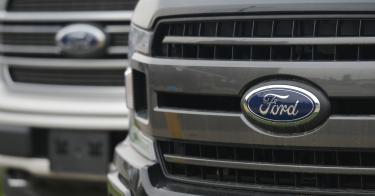In almost every case, whenever a tariff or quota is imposed on imports that tax is strongly supported by the domestic industry getting the protective shield from lower-priced foreign competition. The sugar industry supports sugar tariffs; textile mills lobby for tariffs on foreign clothing. The steel industry and the aluminum makers are getting rich off of the high taxes on imported metals.
The trade barriers almost always benefit the protected industry by increasing its production, profits and domestic workforce. The problem with tariffs is they shift higher costs onto the backs of non-protected industries and consumers.
But what is peculiar about President Trump’s proposed 25 percent auto tariff is that even most of the domestic car industry producers don’t want it. They seem to be telling Mr. Trump: Thanks, but no thanks to the restrictions on foreign import competitors.
Last week, the Driving American Jobs coalition issued a statement opposing auto tariffs. This is a group representing the United States’ leading auto manufacturers, parts suppliers, auto dealers, parts distributors, retailers and vehicle service providers.
Get a load of the trade associations and companies signed on; the American Automotive Policy Council, the Auto Care Association, the American International Automobile Dealers Association, the Alliance of Automobile Manufacturers, the Association of Global Automakers, the Motor & Equipment Manufacturers Association, the National Automobile Dealers Association and the Specialty Equipment Market Association.
Even more remarkable is that the Auto Alliance, which represents 70 percent of all car and light trucks sold in the United States, also opposes the tariffs. This includes the big three: Fiat Chrysler Automobiles, Ford Motor Co., and General Motors. It also includes foreign car companies producing autos in the United States, including Mercedes-Benz USA, Volkswagen Group of America and Volvo Car USA.
Can someone please explain to me why the administration is rallying behind a tariff that the industry itself opposes?
So why wouldn’t domestic manufacturers love these added costs on their competition? Several reasons. First, the higher costs of producing autos means that roughly 1 million fewer new cars will be sold annually. This hurts not just consumers (who spend $340 billion on imported autos and auto parts each year, so a 25 percent threatened tariff would raise the price tag on vehicles by almost $75 billion a year), but the whole domestic and foreign auto industry, as shown in the chart below. Many cars would rise in price by $5,000.
Second, the reality of globalization and planetary supply chains means a car today is produced all over the world. The parts may come from Asia, the assembly from Mexico, the tires from Canada, the computer console system from Japan. Foreign cars — including Hondas, Toyota and BMWs — are often made in America. American cars are made with foreign parts. So everybody in the industry gets hit by the tariffs.
“There is no such thing anymore as a car only made in America,” says Mitch Bainwol of the American Automotive Alliance. “A car is now produced in many countries all at once.”
Finally, some 2 million cars made in America are sold abroad. The tariffs will make those Made in America cars more expensive for foreigners to buy. This would hurt auto workers — though the UAW union has been generally supportive of the tariff.
Mr. Trump’s heart is in the right place. He wants to save the U.S. auto industry and he wants to save American auto jobs. The biggest impact on the industry is not foreign competition, however. It is the radical change that is coming very soon with driverless cars, which will lower the demand for cars in the future as more people simply order rides on-demand and online through Uber-type applications rather than own cars.
Tariffs have almost never saved a domestic industry from decline and often times by sheltering domestic producers from competition only reward and prolong bad business practices. The Trump administration should stop trying to save an industry that doesn’t need or want saving.
This piece originally appeared in The Washington Times





